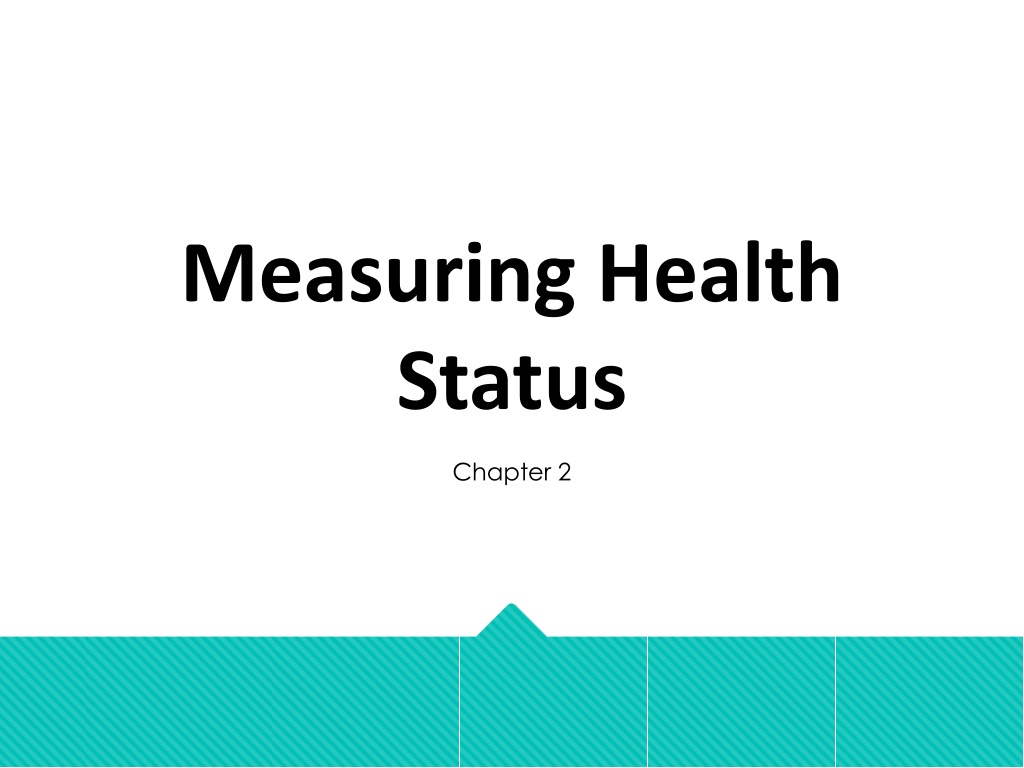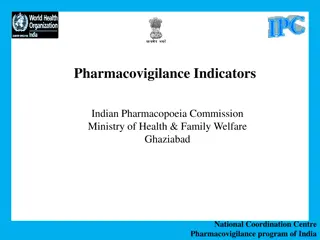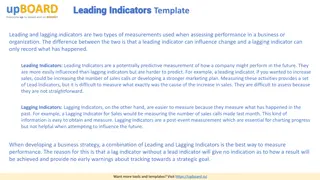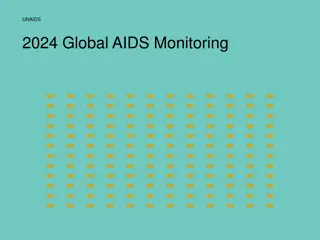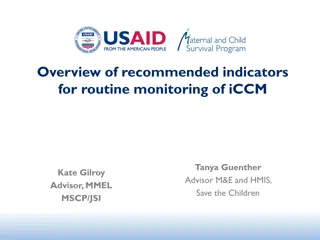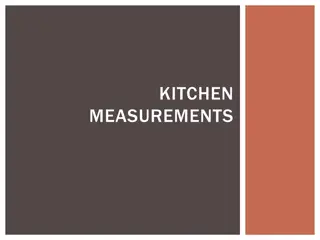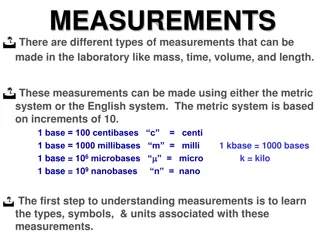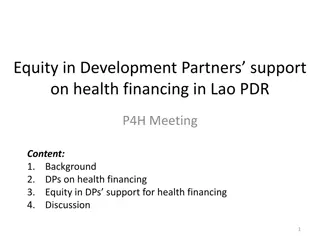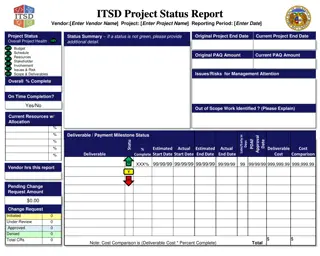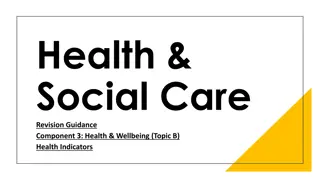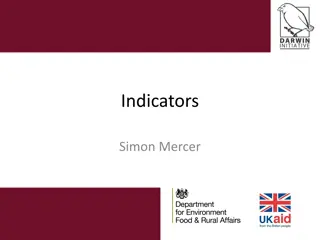Understanding Health Status Indicators and Measurements
Health status indicators play a crucial role in assessing overall health status at individual, group, and population levels. These measurements, such as self-assessed health status and life expectancy, provide valuable insights for governments to identify trends, enact appropriate interventions, and promote optimal health and well-being. However, accuracy and perception can vary, as seen in self-assessed health status indicators. By understanding and utilizing these indicators effectively, societies can work towards improving health outcomes and longevity.
Download Presentation

Please find below an Image/Link to download the presentation.
The content on the website is provided AS IS for your information and personal use only. It may not be sold, licensed, or shared on other websites without obtaining consent from the author. Download presentation by click this link. If you encounter any issues during the download, it is possible that the publisher has removed the file from their server.
E N D
Presentation Transcript
Measuring Health Status Chapter 2
Health Status Indicators Referred to as measurements used to determine health status. They can provide accurate information about overall health status. Governments can use these indicators to examine trends in health status and then act accordingly to assist individuals, groups or populations to achieve optimal health and wellbeing.
Health Status For populations and whole countries, health status is generally measured using health status indicators, which include: self-assessed health status life expectancy and health-adjusted life expectancy mortality deaths (maternal, infant and under five) morbidity disease (incidence and prevalence) burden of disease impact of diseases on life (disability-adjusted life years, years of life lost and years lost due to disability).
When a question requests an affect onhealth and wellbeing the dimensions should be the focus. When a question requests an affect on health status , the health status indicators should be the focus of the answer. Exam/SAC guidelines For example, if discussing how education can influence health and wellbeing or health status, the respective answers could be: Health and wellbeing educated individuals are more likely to understand the benefits of being socially connected and may therefore invest time in socialising which can enhance the quality of relationships and promote social health and wellbeing. Health status education can mean that people have a greater understanding of healthy eating. This can promote healthy food intake which can promote healthy body weight and reduce the prevalence of cardiovascular disease. In turn, this can decrease rate of premature mortality from causes such as heart attack and increase life expectancy. However if a question simply states an affect on health or health outcomes either can be given to gain the marks.
Self- Assessed health status Indicator used of health status which reflects a person s perception of his or her own health and wellbeing at a given point in time. Often collected from population surveys and provides an indication of the overall level being experienced in relation to all aspects of health and wellbeing. Not always an accurate tool. Why? Classify their level based on the following scale Very Good Poor Fair Good Excellent
Life expectancy is defined as an indication of how long a person can expect to live, or the number of years remaining to an individual at a particular age if death rates do not change. The most commonly used measure is life expectancy at birth. Life Expectancy As life expectancy is based on the average age at death, life expectancy increases as a person gets older. If a person survives the periods of birth, infancy, childhood and youth, their chance of reaching older age increases.
Health Adjusted Life Expectancy (HALE) a measure of burden of disease based on life expectancy at birth, but including an adjustment for time spent in poor health. It is the number of years in full health that a person can expect to live, based on current rates of ill health and mortality. HALE measures both quantity and quality of life High HALE = Good Healthy Life Low HALE = Unhealthy life lived with disease or reduced functioning
Mortality Refers to deaths in a population in a given period. Mortality rate: Number of deaths in a 12 month period per 1000 or 100,000 people from a specific cause.
How mortality has changed Why have these changed?
Infant Mortality Rate Measures the rate of deaths of infants between birth and their first birthday (expressed per 1000 live births.)
Under 5 Mortality Rate The rate of deaths occurring in children under 5 years of age per 1,000 live births. Although the overall rate of under-five mortality has decreased, child mortality rates for Aboriginal and Torres Strait Islander peoples, those living outside of Australia's major cities, and low socioeconomic groups remain higher than for the rest of the population
Maternal Mortality Ratio Measures the number of mothers who die as a result of pregnancy or childbirth, up to 6 weeks after delivery (expressed per 100,000 live births)
Maternal Mortality Ratio Common leading causes of maternal mortality include: Cardiovascular Disease Obstetric haemorrhage (excessive bleeding during pregnancy, labour, birth or after birth) Birthing complications Lack of trained healthcare professionals present Lack of Education and knowledge
Morbidity Refers to ill-health in an individual and the levels of ill-health in a population or group.
Prevalence The number or proportion of cases of a particular disease or condition present in a population at a given time.
Incidence The number of new cases of a condition during a given period of time. Incidence In with the new
Burden of disease Burden of disease measures the gap between current health status and an ideal situation where everyone lives to an old age free of disease and disability. Measured in a unit called the DALY =YLL+YLD.
Disability Adjusted Life Years (DALY) A measure of burden of disease, one DALY equals one year of healthy life lost due to premature death, illness, disease or injury. YLL YLD DALY YLL Years of life LOST YLD Years of life spent with disease, illness or disability
